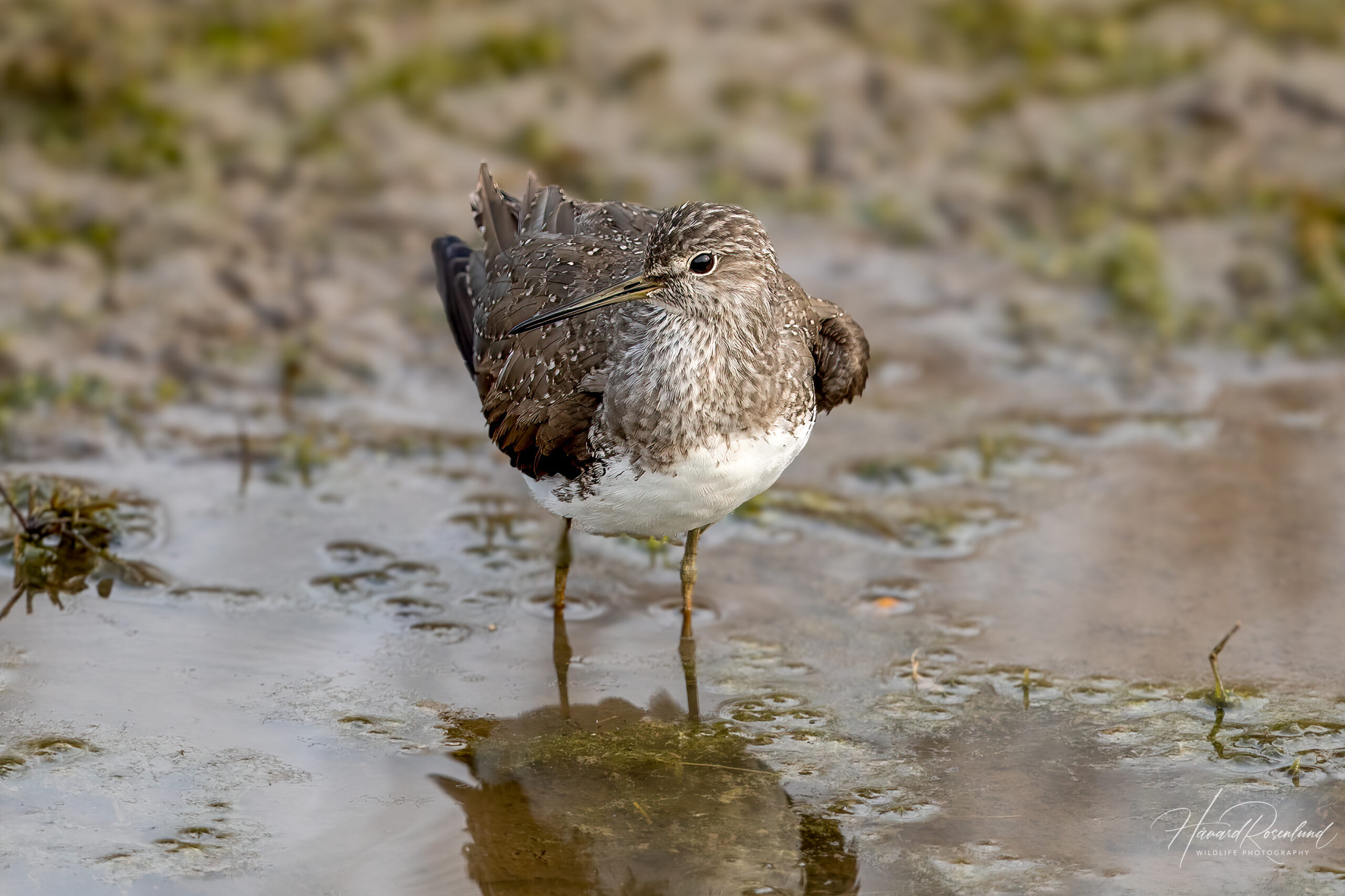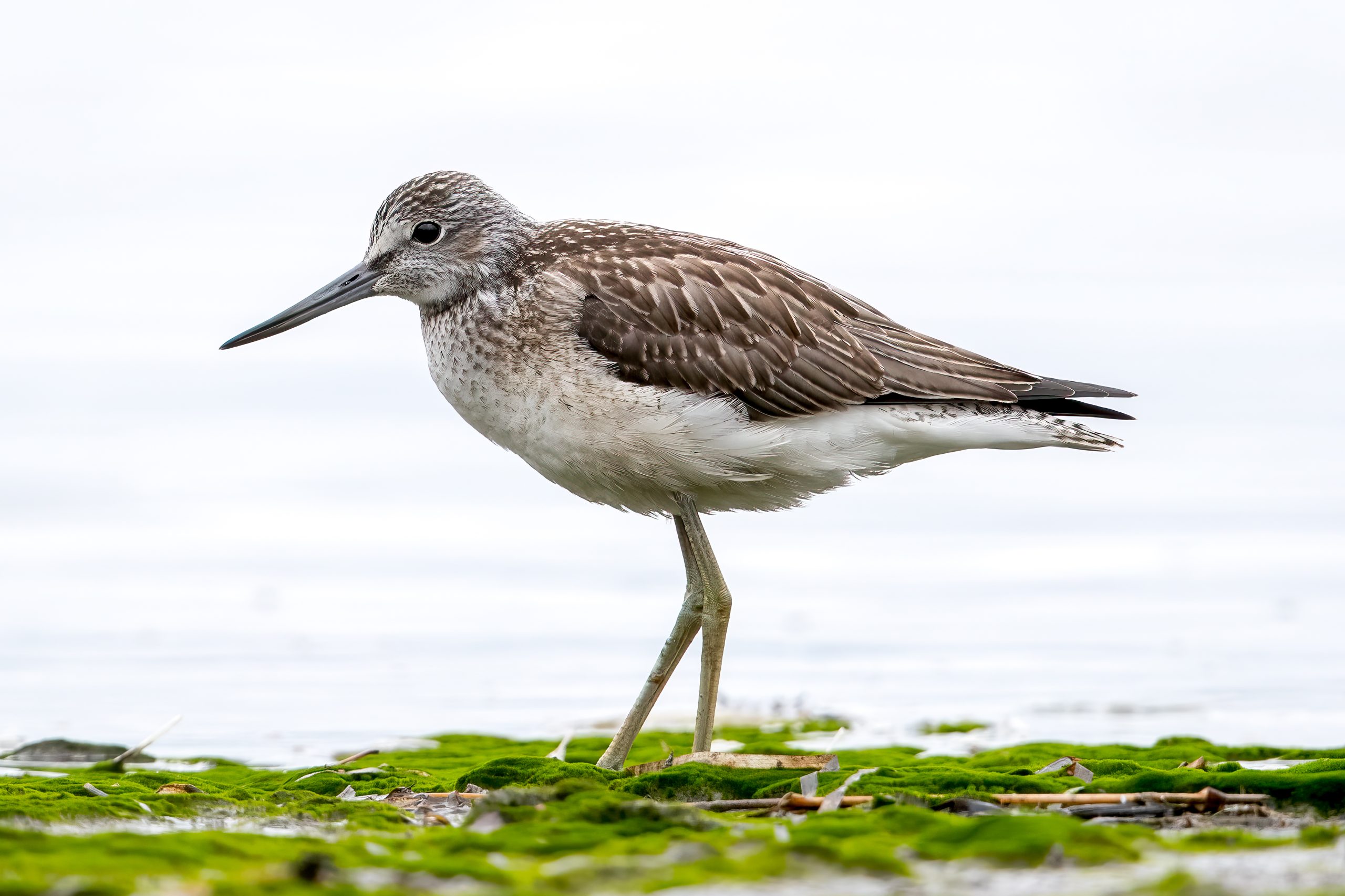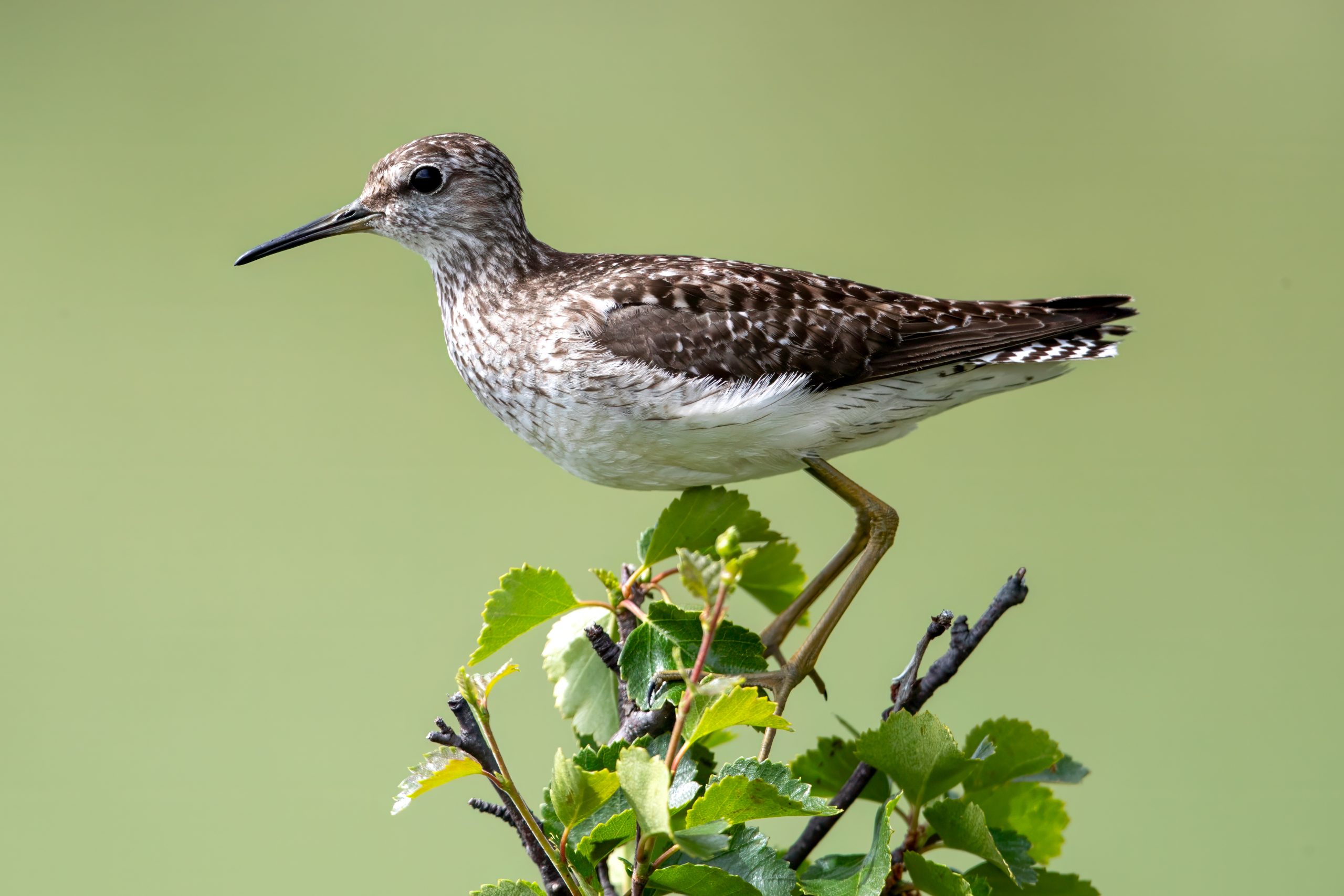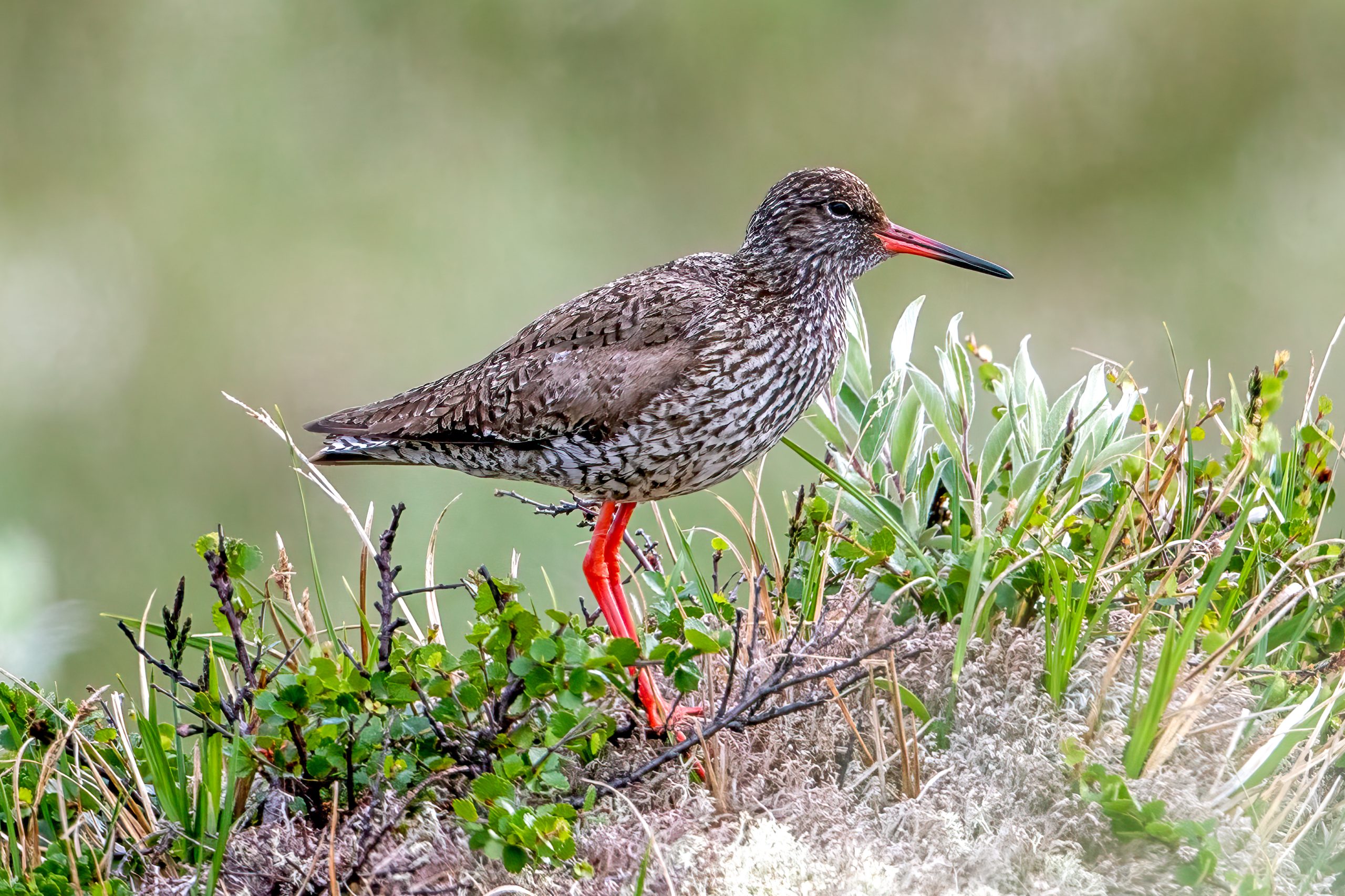Description
The green sandpiper (Tringa ochropus) is a medium-sized wader with a range extending across Europe and Asia, breeding in the boreal forests and migrating to southern Europe, Africa, and southern Asia for the winter. It is notable for its distinctive white rump, only visible in flight, and contrasting dark upperparts. This species is approximately 21-24 cm (8.3-9.4 in) in length, with a wingspan of 59-64 cm (23-25 in). It is very similar to the somewhat smaller solitary sandpiper (Tringa solitaria), which is found in the Americas. Within its range, the green sandpiper can be confused with the wood sandpiper (Tringa glareola), but can be distinguished by having a darker plumage, which is visibly more contrasting to the white underparts, a lack of a white supercilium, and a more robust build.
Diet & habitat
Green sandpipers are typically found in wooded areas in the vicinity of freshwater habitats, such as marshes, ponds, and slow-moving rivers and streams. These birds often prefer areas with dense vegetation for cover. They can be found in more open areas near water outside of the breeding season. Their diet consists mainly of insects, small crustaceans, and other invertebrates, which they forage by probing into the mud or shallow water. Green sandpipers are known for their solitary feeding habits, often seen alone rather than in flocks.
Migration
Green sandpipers are migratory birds, embarking on long-distance journeys between their breeding and wintering grounds. They breed from late May to early July and begin their southward migration in late July and August. They travel to wintering areas in southern Europe, Africa, and southern Asia, returning to their breeding grounds by April or May.
Nesting
The breeding season for green sandpipers begins in late May and extends through early July. They are unique among sandpipers as they often nest in old nests of other birds, such as thrushes, located in trees or shrubs. The female typically lays 3-4 eggs, which are incubated for about 22-24 days. Both parents share incubation duties. After hatching, the chicks are precocial and leave the nest soon after, with fledging occurring around 25-30 days later.
Status
The green sandpiper is currently listed as least concern by the IUCN, indicating that the species is not currently at risk of extinction. Despite this, habitat loss and degradation pose ongoing threats to their populations, particularly in their breeding and wintering grounds. Conservation efforts focus on protecting wetland habitats and ensuring the availability of suitable nesting sites.








